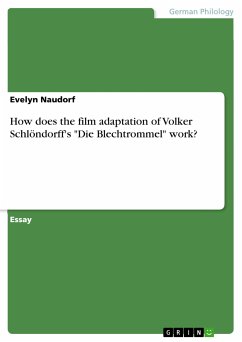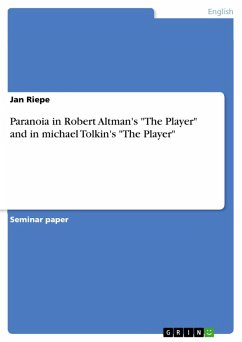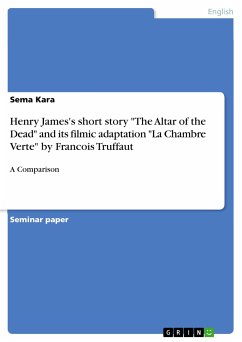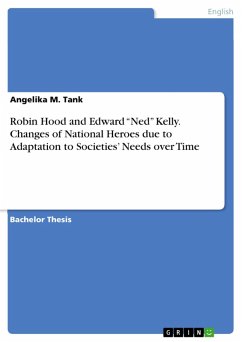
How does the film adaptation of Volker Schlöndorff's "Die Blechtrommel" work? (eBook, PDF)

PAYBACK Punkte
0 °P sammeln!
Essay from the year 2001 in the subject German Studies - Comparative Literature, grade: A, University of London (Faculty of German Literature), course: German Narrative Fiction: Text and Film, language: English, abstract: 'The key to understanding The Tin Drum lies in understanding the mind of its remarkable first-person narrator, Oskar Matzerath, that brilliantly conceived fictional eyewitness and personification of the Third Reich, its prehistory, and its aftermath.'1 This quote stresses the importance of the narrator in Günter Grass' novel. In this essay, I should like to compare the narra...
Essay from the year 2001 in the subject German Studies - Comparative Literature, grade: A, University of London (Faculty of German Literature), course: German Narrative Fiction: Text and Film, language: English, abstract: 'The key to understanding The Tin Drum lies in understanding the mind of its remarkable first-person narrator, Oskar Matzerath, that brilliantly conceived fictional eyewitness and personification of the Third Reich, its prehistory, and its aftermath.'1 This quote stresses the importance of the narrator in Günter Grass' novel. In this essay, I should like to compare the narrative structure in the novel with the film adaptation. As my aim is to find out how the film version works, I would like to put forward the proposition that not only the understanding of the narrator's mind is crucial for the understanding of the novel, but also the understanding of the narrative structure itself within Die Blechtrommel. Therefore, I will have a closer look at the novel first and then proceeding to the film, in order to examine the changes Volker Schlöndorff made and what effect they may have on the understanding of the film. Hans Magnus Enzensberger, a famous German poet and critic, described Günter Grass' novel as a 'Brocken, an dem Rezensenten und Philologen mindestens ein Jahrzehnt lang zu würgen haben, bis es [sic] reif zur Kanonisierung oder zur Aufbewahrung im Schauhaus der Literaturgeschichte ist.'2 This prophecy of 1959 came true and it was not until twenty years later that Volker Schlöndorff tried the first film adaptation of this complex work of literature. Nevertheless, the novel was a tremendous success, not only in post-war Germany. In the following paragraph, I will start with an explanation of the elements, which make the novel's narrative structure so complicated and multilayered. 1 Keele, Alan Frank. Understanding Günter Grass, page 11 2 Richter, Frank. Die zerschlagene Wirklichkeit. Überlegungen zur Form der Danzig-Triologie von Günter Grass, page 7
Dieser Download kann aus rechtlichen Gründen nur mit Rechnungsadresse in A, B, BG, CY, CZ, D, DK, EW, E, FIN, F, GR, HR, H, IRL, I, LT, L, LR, M, NL, PL, P, R, S, SLO, SK ausgeliefert werden.













